The U.S. labor market has experienced significant shifts in recent years, influenced by factors such as technological advancements, changing worker priorities, and economic fluctuations. These changes have led to evolving patterns in career trajectories and job satisfaction among American workers.
This research aims to provide a comprehensive overview of career change trends in the U.S., utilizing data from reputable sources to inform professionals, employers, and policymakers about the current state of career mobility.
10 most interesting career change statistics
- 59% of U.S. professionals were actively looking for a new job in 2024, an unprecedented level of career mobility.
- The average American worker changes jobs 12 times over their career, underscoring how “job for life” is truly a thing of the past.
- Median tenure plunged to 3.9 years in January 2024, the lowest point since January 2002, down from 4.1 years in early 2022.
- 83% of workers now rank work‑life balance above pay, marking the first time balance has overtaken compensation as the top priority.
- 76% of U.S. workers seek remote work opportunities, and 41% of those eyeing a career change prioritize flexible arrangements.
- In the finance & insurance sector, 65% of employees either switched industries or exited the workforce altogether, and in public/social services, that departure rate jumps to 72%.
- Solar electric power generation employment is projected to soar 275.9% (and wind by 115.1%) between 2023 and 2033, making green energy one of the fastest‑growing fields.
- By 2030, 70% of the skill sets currently required across occupations will undergo significant change due to AI and automation.
- 51% of U.S. respondents worry that technological advances will render their skills obsolete, and 24% fear outright replacement by automation.
- 90% of Americans admit financial pressures have forced them to stay in a job longer than they’d prefer, creating a huge barrier to career pivots.
40+ career change statistics in the US (2024 – 2025)
Overall career change rates
In 2024, approximately 59% of U.S. professionals were focused on finding a new job, indicating a high level of career mobility.
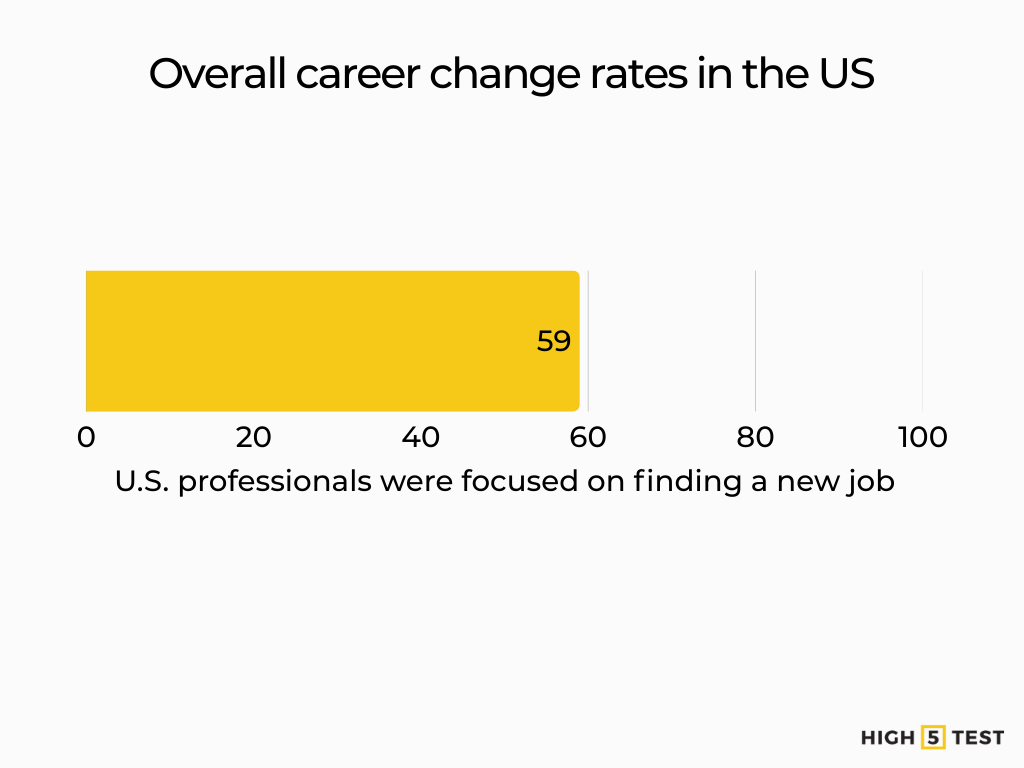
Source: Glassdoor
Stats on how many people seek a career change
A survey found that nearly half of U.S. workers in several industries planned to look for a new job in 2024, with the retail industry seeing the highest rate at 54%.
Source: LinkedIn
Stats on the number of jobs in a lifetime
The average American worker changes jobs 12 times during their career.
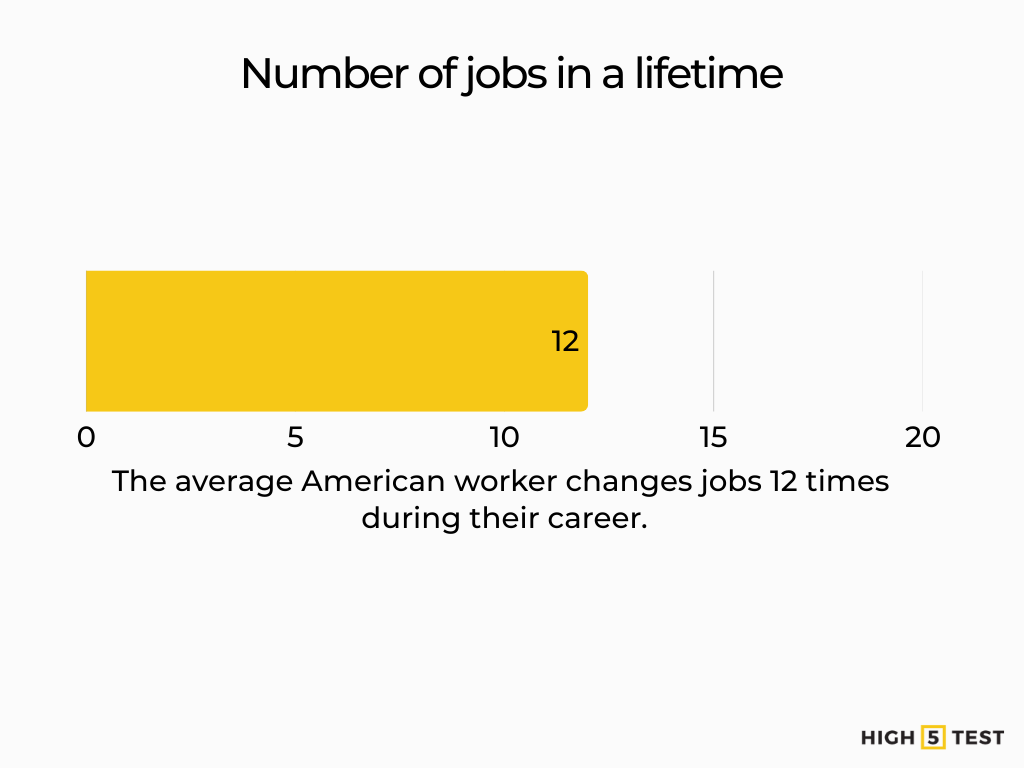
What is the median job tenure in the US?
In January 2024, wage and salary workers had a median tenure of 3.9 years with their current employer, down from 4.1 years in January 2022 and marking the lowest level reported since January 2002.

Source: BLS
Stats on career change breakdown by age
When analyzed by age group, workers aged 65 and older hold their positions for an average of 10.3 years.
The 25–34 age group reflects a significantly shorter median tenure of 3.2 years.
Source: BLS
Gender differences in career transitions
In January 2024, the median tenure for male employees was 4.2 years, down slightly from 4.3 years in January 2022. For female employees, the median tenure was 3.6 years, compared to 3.8 years two years earlier.
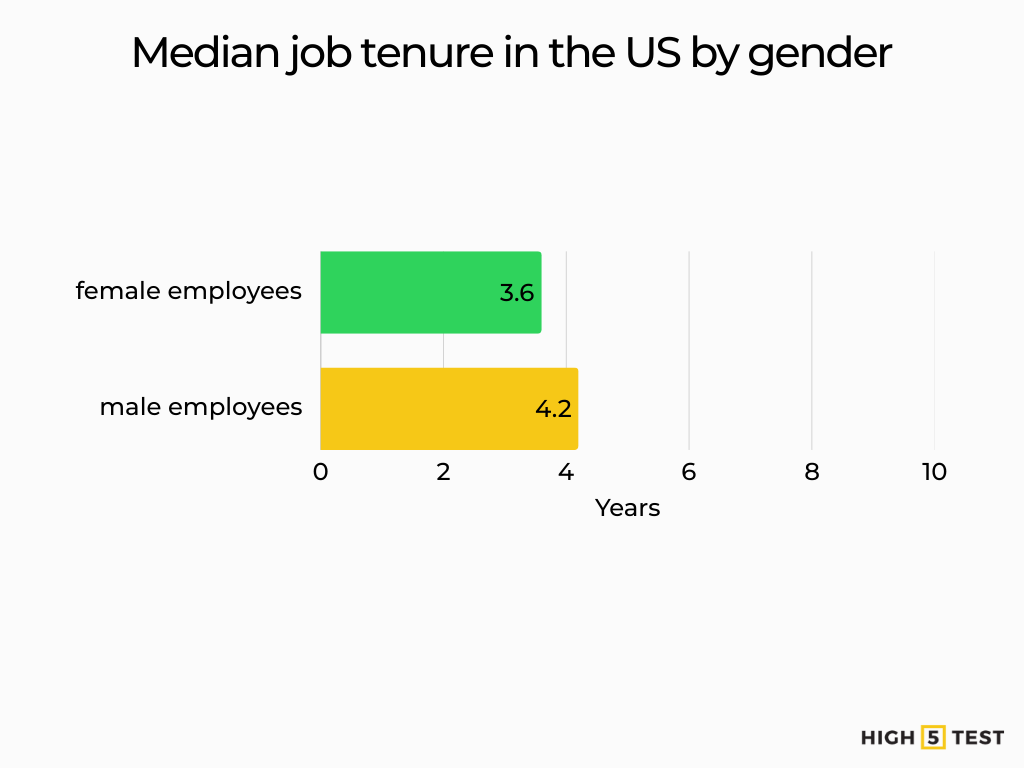
Source: BLS
Industry-specific career transition trends
Industries such as retail (54%), hospitality (48%), tech (47%), and administrative services (47%) have the highest rates of employees planning to job hunt in 2024.
| Industry | Employees looking for a career change |
|---|---|
| Retail | 54% |
| Hospitality | 48% |
| Tech | 47% |
| Administrative | 47% |
Source: LinkedIn
Common reasons for career changes
83% of workers now rank work-life balance above compensation, which comes in at 82%. This marks the first time in the report’s history that balance has overtaken pay as the top priority.
Source: Randstad USA
Stats on demographic insights of career changers
Age groups most likely to change careers
- 26% of employees aged between 25 and 29 seek a career change.
- 23% of employees aged between 30 and 34 seek a career change.
- 17% of employees aged between 35 and 39 seek a career change.
- 13% of employees aged between 18 and 24 seek a career change.
- 12% of employees aged between 40 and 44 seek a career change.
A significant portion of career changers falls within the following age groups:
- 49% of individuals seeking a career change are between the ages of 25 and 34.
- 78% of career change seekers are between the ages of 25 and 44.
- In contrast, people aged 45 and older make up just 11% of those pursuing career transitions.
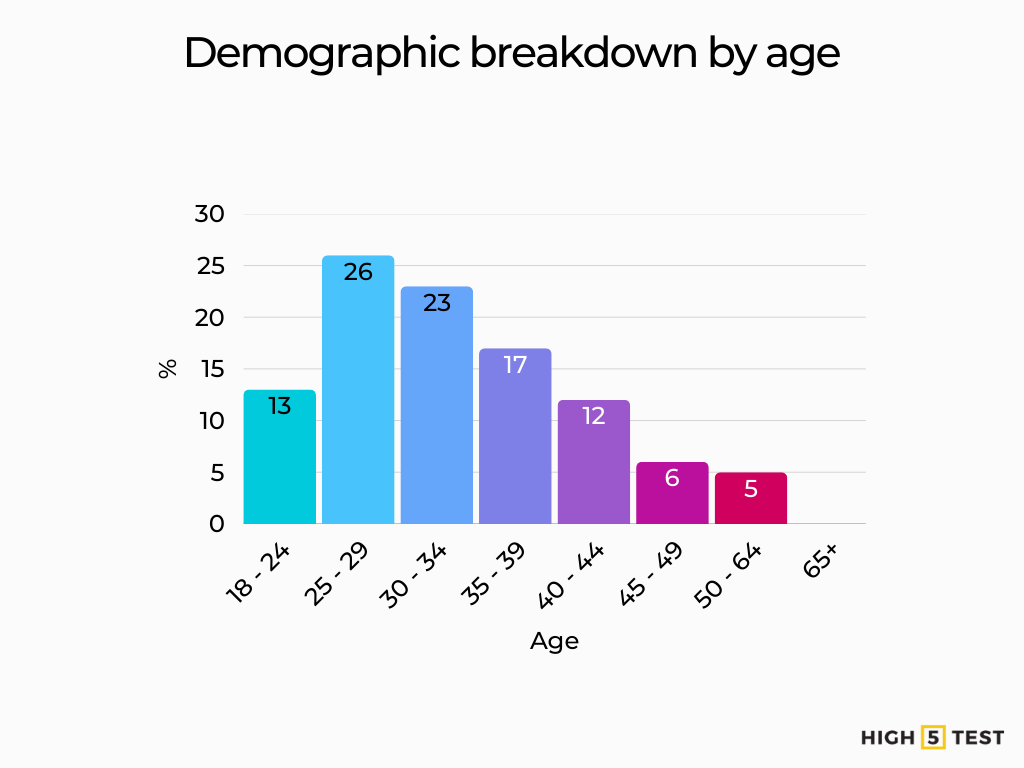
Source: Tribe And Seek
Ethnic and racial trends in career changes
Among workers not self-employed, 55% of White workers report higher levels of job satisfaction than Black (43%), Hispanic (44%), and Asian (42%) workers, which directly influences the decision to do a career change or not.
Source: Pew Research Center
Statistics on industry and role transitions
Top industries experiencing career changes
Industries such as retail (54%), hospitality (48%), tech (47%), and administrative services (47%) have the highest rates of employees planning to job hunt in 2024.
Source: LinkedIn
In the finance and insurance sector, 65% of employees either transitioned to a different industry or exited the workforce entirely. The public and social sector saw an even higher departure rate, with 72% of workers making a similar move.
Source: McKinsey
Roles with high transition rates
According to data, managers, professionals, and related occupations report the highest median job tenure at 5.5 years.
In comparison, service occupation workers exhibit the lowest median tenure, averaging 3.2 years.
Source: BLS
Emerging fields attracting career changers
Data projects that the healthcare and social assistance sector will be the primary driver of employment growth from 2023 to 2033. Specifically, this sector is expected to add 2.3 million jobs, accounting for over one-third of all new jobs during this period.
Additionally, it is projected to experience a 10% growth rate, which is more than double the average growth rate for all sectors, indicating potential opportunities for career changers.
Source: Bureau of Labor Statistics
Employment in solar electric power generation is projected to grow by 275.9%, and wind electric power generation by 115.1% from 2023 to 2033.
Source: Bureau of Labor Statistics
Employment in computer and information technology occupations will grow much faster than the average for all occupations from 2023 to 2033.
Source: Bureau of Labor Statistics
Stats on motivations behind career changes
Desire for better compensation
Only 30% of workers reported being highly satisfied with their pay in 2024, down from 34% the previous year.

Source: Pew Research Center
Seeking work-life balance
Workers expressed higher satisfaction with flexibility in choosing work hours (49%) compared to remote work flexibility (37%).
Source: Pew Research Center
Stats on wanting more work flexibility
76% of workers seek remote work opportunities, and 41% of those considering a career change prioritize flexible job arrangements.
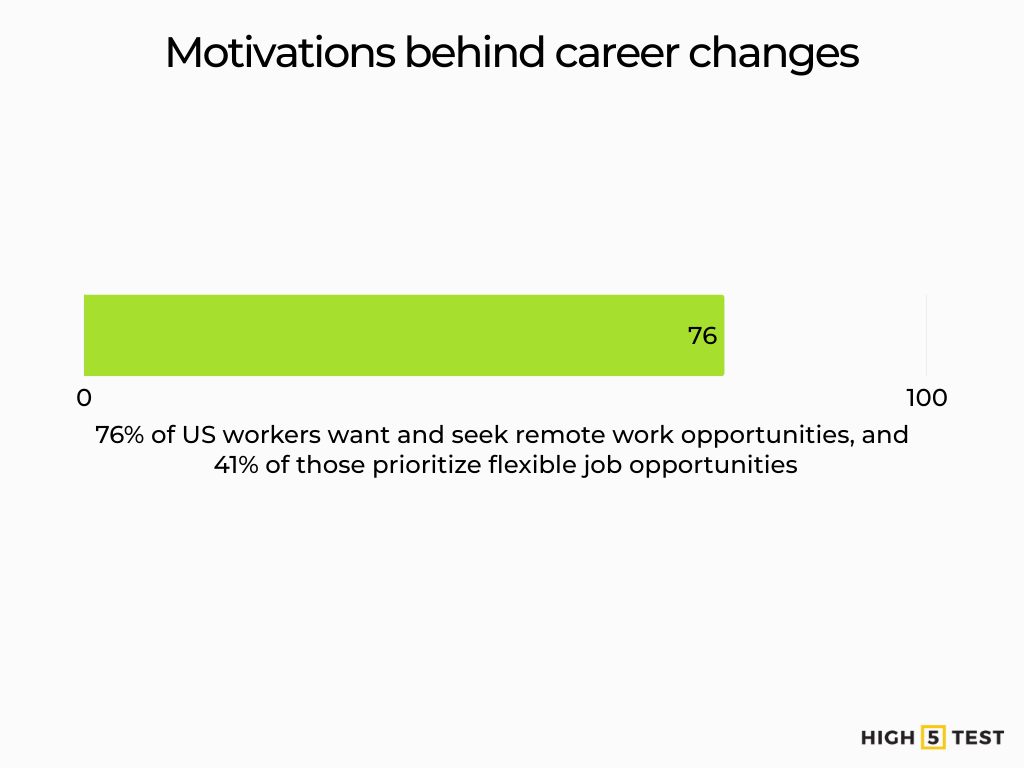
Source: Robert Half
Pursuit of passion or interest
21% of U.S. professionals aged 25 – 44 change careers to follow personal passions or interests.
Source: edX
Stats on being satisfied at work
In 2024, 50% of U.S. workers reported being extremely or very satisfied with their job overall.
Source: Pew Research Center
Impact of technological advancements
By 2030, projections suggest that 70% of the skill sets currently required across occupations will undergo significant change, largely driven by advancements in artificial intelligence and automation technologies.
Source: LinkedIn
Stats on challenges faced during career transitions
Skill gaps and training needs
In the US, 51% of respondents acknowledged that technological advancements are likely to render their current skills obsolete, while 24% expressed concern that automation and artificial intelligence could ultimately replace their roles.
In the UK, the figures are slightly lower, with 44% anticipating their skills becoming obsolete and 21% concerned about being replaced by automation, still a noteworthy portion of the workforce.
Source: Global Labor Market Conference
Financial implications
Financial concerns have caused 90% of Americans to stay in a job longer than they’d prefer.
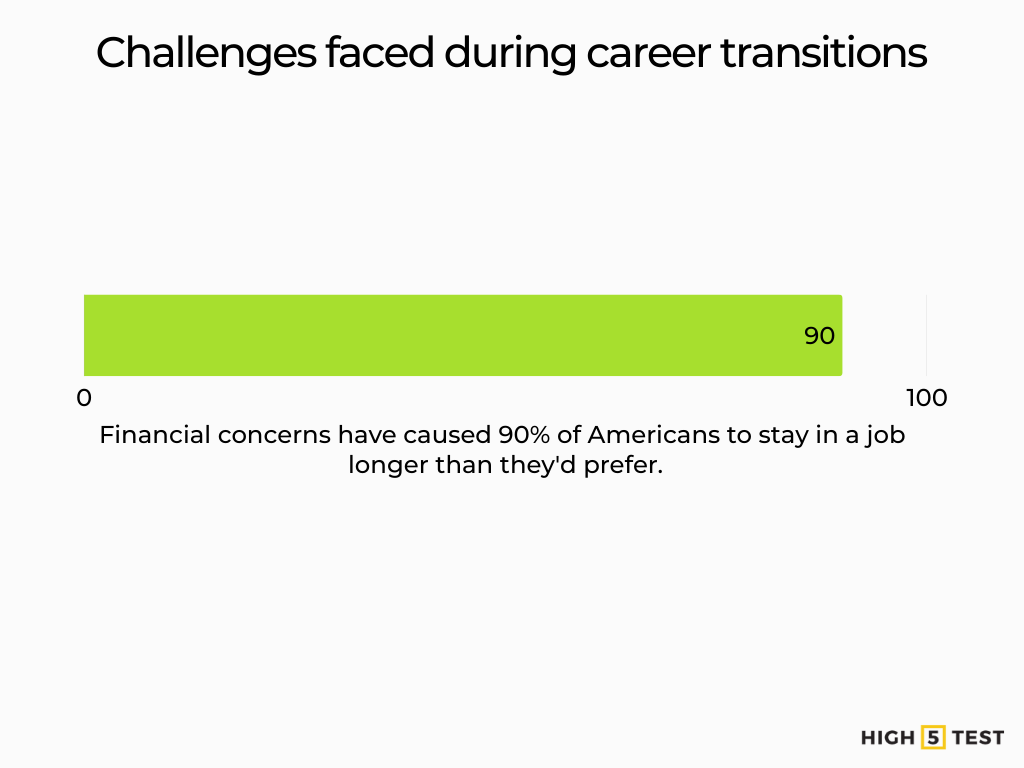
Source: Side Hustles
Stats on what stops people from making a career change
Emotional and psychological barriers
Uncertainty about career fit fuels hesitation. 32% of individuals aren’t sure if a new career would suit them, making them even more cautious about making a move.
Skill gaps and competition further add to their concerns. 20% of individuals worried about acquiring the right skills and 14% were anxious about competing against more experienced candidates.
| Reasons for not making a career change | Percentage |
|---|---|
| Career fit | 32% |
| Skill gap | 20% |
| Competition | 14% |
Strategies for successful career changes
Upskilling and reskilling opportunities
87% of professionals believe that reskilling will help them switch careers or internal jobs, and companies offering upskilling programs saw 54% higher employee retention.
Source: LinkedIn
Future outlook
Predicted trends in career mobility
Projections for 2023 – 2033 indicate that the U.S. economy is projected to add 6.7 million jobs during this period.
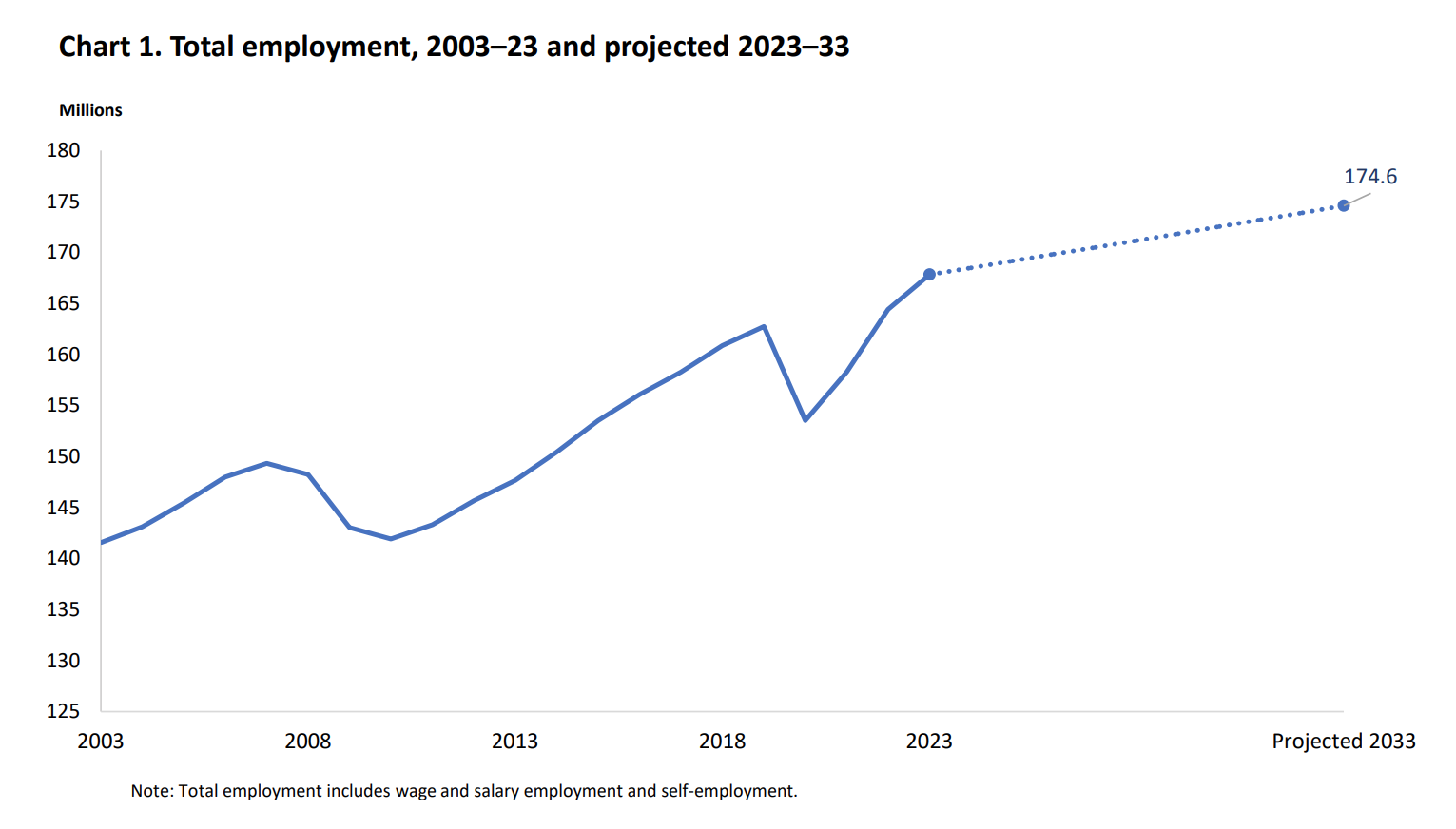
The significant growth is expected in sectors such as healthcare (+1.0 percent annually), informational and technical services (+0.7 percent), professional and business services sector (+0.7 percent) and green energy (+0.6 percent annually).
Source: Bureau of Labor Statistics
Which career will have the most jobs in 2024 and beyond?
The healthcare sector, particularly nurse practitioners (NPs) and data analysts in health systems, is expected to have the highest job growth through the end of the decade.
Source: Bureau of Labor Statistics
FAQ
Is 35 too old to switch careers?
Not at all. Age 35 is a common and viable time for a career transition. Many professionals successfully change careers in their mid-30s, bringing valuable experience and transferable skills to new roles. With proper planning, upskilling, and networking, a career change at this age can be highly successful.
How many times will Gen Z change careers?
Members of Generation Z are expected to change jobs up to 10 times between the ages of 18 and 34. Over their entire working lives, they may have as many as 17 jobs and up to seven different careers, reflecting a trend toward greater career mobility.
Conclusion
Today’s career landscape is defined by record‑high mobility and a shift toward valuing work‑life balance over pay. Rapid growth in healthcare, green energy, and IT brings new opportunities, but also skill‑gap anxieties, while financial pressures and uncertainty about fit remain hurdles. To thrive, both individuals and organizations must embrace flexibility, reskilling, and targeted career support.
